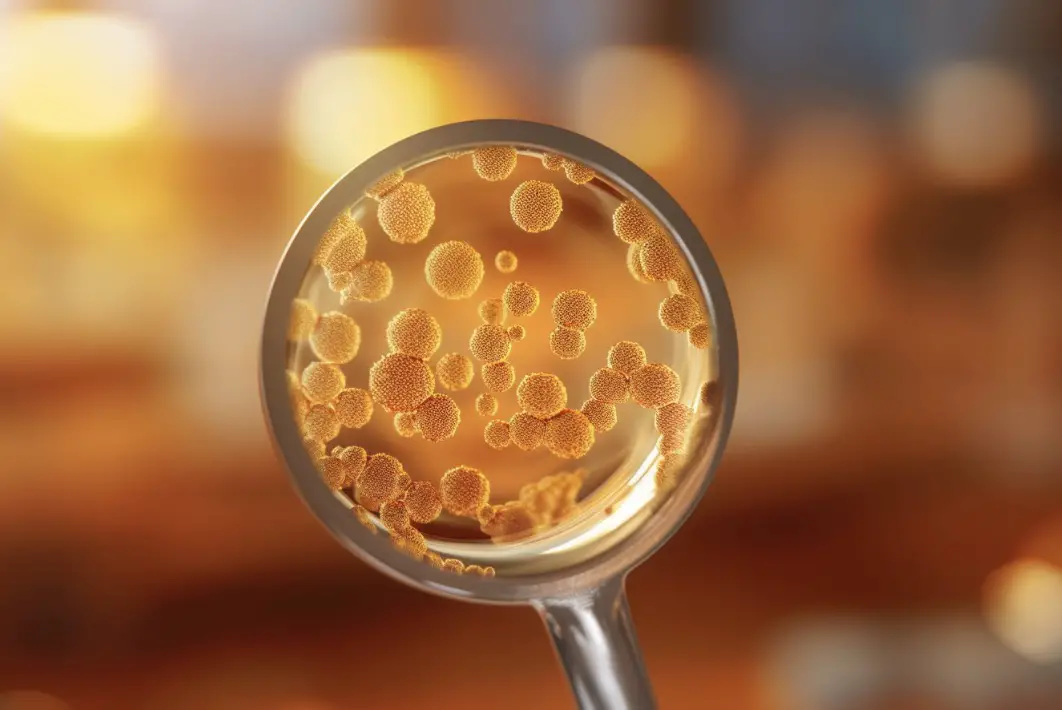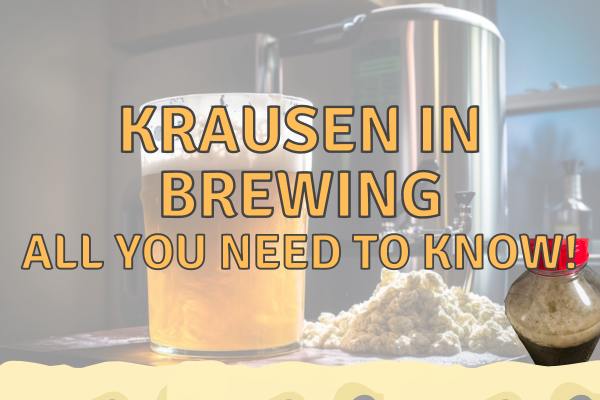If you’re a cider lover or simply curious about the world of homebrewing, you may be wondering whether it’s possible to use wine yeast to make cider. After all, both wines and ciders are fermented beverages, so why not use the same type of yeast for both? In this blog post, we’ll explore the answer to this question in more detail and discuss what factors you should consider when choosing the best yeast for your cider-making endeavors. Whether you’re a seasoned brewer or a total beginner, read on to discover everything you need to know about using wine yeast in your cider-making process.
1. Introduction: Wine yeast and cider making
The use of wine yeast in cider making has become more popular in recent years. While traditional neutral Champagne-like yeast strains were recommended for cider making, modern cider makers have found success with wine yeast strains that enhance the aroma of the cider. It is important to note that the most common species of yeast used for cider making is still Saccharomyces cerevisiae, which is a general-purpose brewing yeast used in many wines.
However, wine yeasts such as the Champagne yeast strand of white wine yeast are also a great choice for brewing hard cider due to its vigorous agent that preserves the apple flavors. While wine yeast can be a great option for cider making, it is important to consider the amount of sugar used and the specific strain of yeast selected. Ultimately, all yeast strains used for cider making are Saccharomyces cerevisiae.
Wine yeast and cider making: what you need to know
When it comes to making cider, it is important to understand the role of yeast in the fermentation process. While there are specific yeast strains that are traditionally used for beer and champagne making, wine yeast can also be used to ferment cider.
However, there are important considerations to keep in mind when using wine yeast for cider making. It is important to be mindful of the amount of sugar used, as wine yeast may produce a higher alcohol content than other strains.
Additionally, modern cider makers are experimenting with yeast strains that enhance the aroma of the final product. Ultimately, whether using wine yeast or another strain, the key to successful cider making is finding the right balance of ingredients and techniques.

Explaining the differences between wine and cider making
When it comes to wine and cider making, there are some key differences to note. Unlike wine which is made with fermented grapes, cider is made using fermented apples. The fermentation process for cider is also typically shorter than it is for wine. Cider is often made with a variety of apple types, such as sweet, sharp, and bittersweet apples.
As for the yeast used in the fermentation process, wine yeast and cider yeast can both be used, but there are some variations in which strains work best for each. Overall, understanding the differences between wine and cider making is important for selecting the appropriate yeast and ingredients for producing a successful batch of either beverage.
Types of wine yeast that can be used for cider making
When it comes to choosing which wine yeast to use for cider making, there are a few options to consider. While many cider makers prefer to use neutral champagne-like strains, others have found success with yeasts that enhance aromas.
Some popular wine yeast strains used for cider making include D47 and Cote des Blancs, which have been known to produce great results. Another excellent option is SN-9 from Vintner’s Harvest, which offers a dryer taste with a unique flavor profile.

Ultimately, the most common species of yeast used for cider making is Saccharomyces cerevisiae, which is a general purpose brewing yeast used in many wines and beers. It’s important to do your research and consider the flavors and characteristics you want your cider to have when choosing which wine yeast to use.
Important considerations when using wine yeast for cider making
Important considerations when using wine yeast for cider making include the flocculation rate of the yeast strain being used. Highly-flocculent strains will produce clearer cider, while less-flocculent strains will produce more hazy cider.
It is also important to prime the airlock after adding the yeast to ensure healthy fermentation. Sulphates are recommended when using wine yeast for cider making. It is suggested to use a measured amount of sugar when using wine yeast for cider making.
Neutral Champagne-like yeast strains were once recommended, but modern cider makers are having success with other strains that enhance aromas. Ultimately, all yeast strains used for cider making are of the Saccharomyces cerevisiae species.2. Wine yeast vs Beer and champagne yeast for cider making
When it comes to choosing the right yeast for your cider making, wine yeast, beer yeast, and champagne yeast are all popular choices. While wine yeast is closely related to cider making, it tends to dry out the cider and can produce a wine-like character, which may not be suitable for some palates.
On the other hand, beer and champagne yeasts can create a variety of sweet or dry ciders with unique flavor profiles. It’s important to consider what you want from your finished cider and how long you intend to ferment it when choosing a yeast strain.
In the end, whether you use wine, beer, or champagne yeast, they are all strains of the same Saccharomyces cerevisiae and will help you achieve your desired result with some experimentation and patience.
3. Best wine yeast for making cider
When it comes to choosing the best wine yeast for making cider, there are a few options. Lalvin EC-1118 is a popular choice, with its ability to ferment at high temperatures and its ability to handle high levels of sugar.
Another option is Enartis Ferm WS, which can add complexity and aroma to the cider. For those looking for a yeast that can preserve the apple flavor, D47 or Nottingham Ale Yeast are recommended. The important thing to consider is the desired outcome and the characteristics the yeast can bring to the cider.
4. Amount of sugar to use when using wine yeast for cider
When using wine yeast for cider making, the amount of sugar needed will depend on the natural sweetness of the fruit juice being used. It is important to use a hydrometer to measure the sugar content, also known as Brix, in the juice.
Generally, 1.5 oz of sugar will make one gallon of wine by 1 Brix. However, fruits with a higher sugar content may require 2-3 pounds of added sugar. Adding too much sugar can result in a higher alcohol content, making the cider taste more like wine. It is important to find the right balance of sweetness and alcohol content when using wine yeast for cider making.
7. Enhancing aroma with yeast strains in cider making
When it comes to enhancing the aroma of cider, choosing the right yeast strain is essential. While wine yeast strains have traditionally been used, modern cider makers are now experimenting with other yeast strains to impart unique flavors and aromas.
For instance, some strains are known to enhance fruitiness and floral notes, while others may produce earthy or spicy aromas. Modulating fermentation temperatures can also influence aromas, with cooler temperatures typically promoting fresher aromas.
It’s important to note that the esters produced by the yeast strain will differ based on the sugar content and fermentation time. Overall, selecting the right yeast strain can make a significant difference in the sensory profile of the cider.
9. Other yeast strains used for cider making
While wine and champagne yeast are commonly used in cider making, there are several other yeast strains that can enhance the flavor and aroma of the final product. For instance, Nottingham Ale Yeast is a popular option for both new and experienced cider makers due to its dry profile and ability to ferment at low temperatures. Additionally, some cider makers use bottom-fermenting lager strains to create a soft and delicate beer-like taste in their ciders. Ultimately, the yeast strain used can have a significant impact on the sensory profile of the cider, so it’s important for cider makers to consider their options carefully.
10. Conclusion: They Are All Saccharomyces cerevisiae
In conclusion, while wine and cider making may seem vastly different, they both rely on the same species of yeast, Saccharomyces cerevisiae. This versatile yeast strain has been used for thousands of years to convert sugar into ethanol and CO2 via fermentation, making it an essential ingredient in the production of beer, wine, sake, and bread as well. While other yeast strains can be used to enhance the aroma in cider making, the optimal starters for cider production are still two strains of Saccharomyces cerevisiae. Understanding the similarities and differences between different yeast strains can help cider makers choose the best yeast for their desired outcome. Ultimately, whether making wine or cider, it all boils down to the magic of Saccharomyces cerevisiae.




